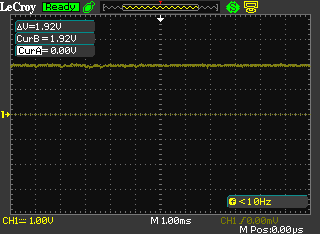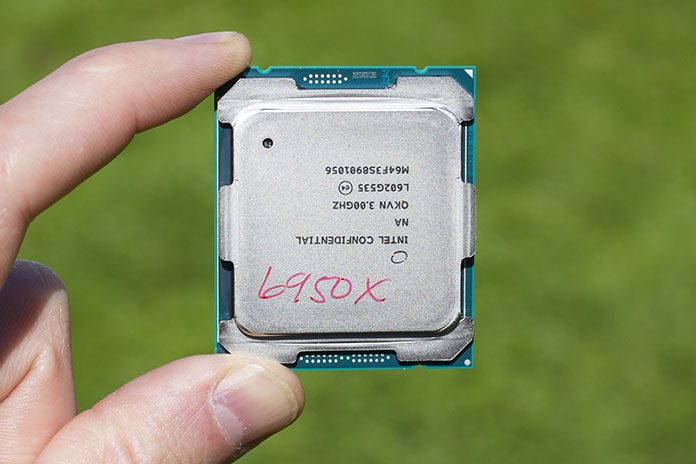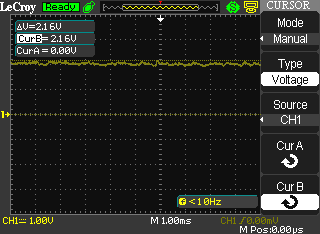Uncore frequency expectations
Compared to Haswell-E, Broadwell-E doesn’t overclock the Uncore domain particularly well. With conventional cooling methods, the highest stable frequency most CPUs manage is limited to 3.8GHz. Most Haswell-E samples were capable of speeds in excess of 4.2GHz, with the best capable of speeds in excess of 4.6GHz. That may seem disappointing for Broadwell-E at first approximation, but most real-world apps don’t benefit greatly from Uncore frequency – there are some benchmarks and a few cache-intensive applications that do, but we consider these special cases. Plus we’re dealing with an architecture that is faster than Haswell-E per clock tick, so the Uncore frequency handicap is not a deal-breaker.
There are also a couple of side effects to overclocking the Uncore that we need to bear in mind. We’ve included a couple of oscilloscope captures below showing power consumption changes due to an Uncore voltage and frequency increase. The EPS 12V current consumed is shown in the top left corner of each screenshot. Move the decimal one place to the right to get the actual current in Amps (19.2A for the first image, and 21.6A for the second).
 4.3GHz CPU core frequency and cache at 3GHz
4.3GHz CPU core frequency and cache at 3GHz
With the CPU core frequency at 4.3GHz and the Uncore at the default frequency, power consumption lands around 200 Watts.
4.3GHz CPU core frequency with cache overclocked to 3.7GHz
Overclocking the Uncore to 3.7GHz using 1.30V results in a 30-Watt power consumption increase and a five-degree temperature jump when the CPU is under full load. While this is a fraction of the total power consumed by the CPU, it is substantial enough for us to take into consideration when tuning a system. As performance gains from overclocking Uncore are limited to select workloads, there are instances where leaving this domain at the default settings makes sense from a power consumption and temperature point of view. If cooling is limited, or you’d like to keep the processor power consumption below a certain level, devote cooling resources to overclocking CPU core frequency instead of increasing the Uncore frequency.
The maximum voltage we use for manually tuning the Uncore – AKA Cache Voltage on ASUS motherboards – is 1.35V. Anything higher results in an exponential rise in power consumption.


